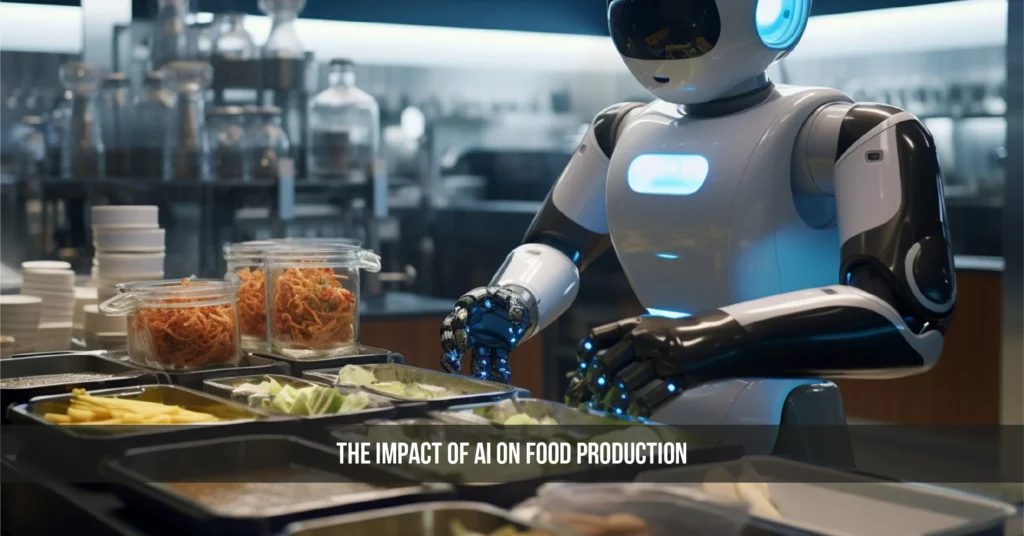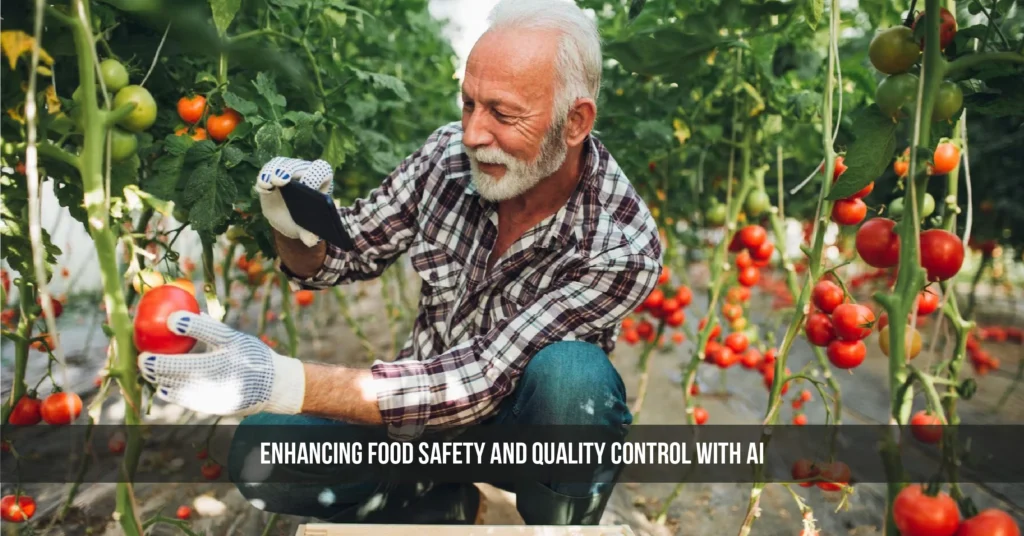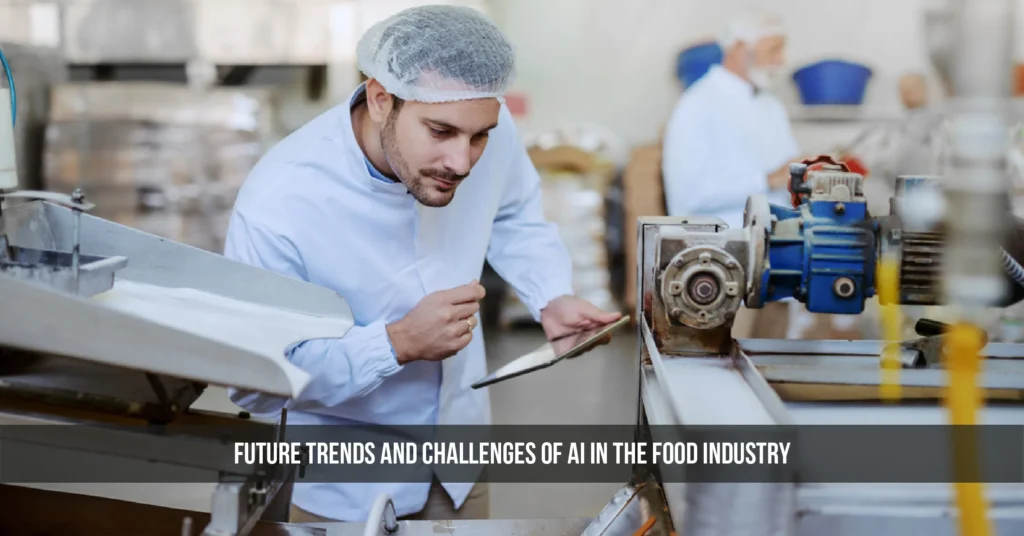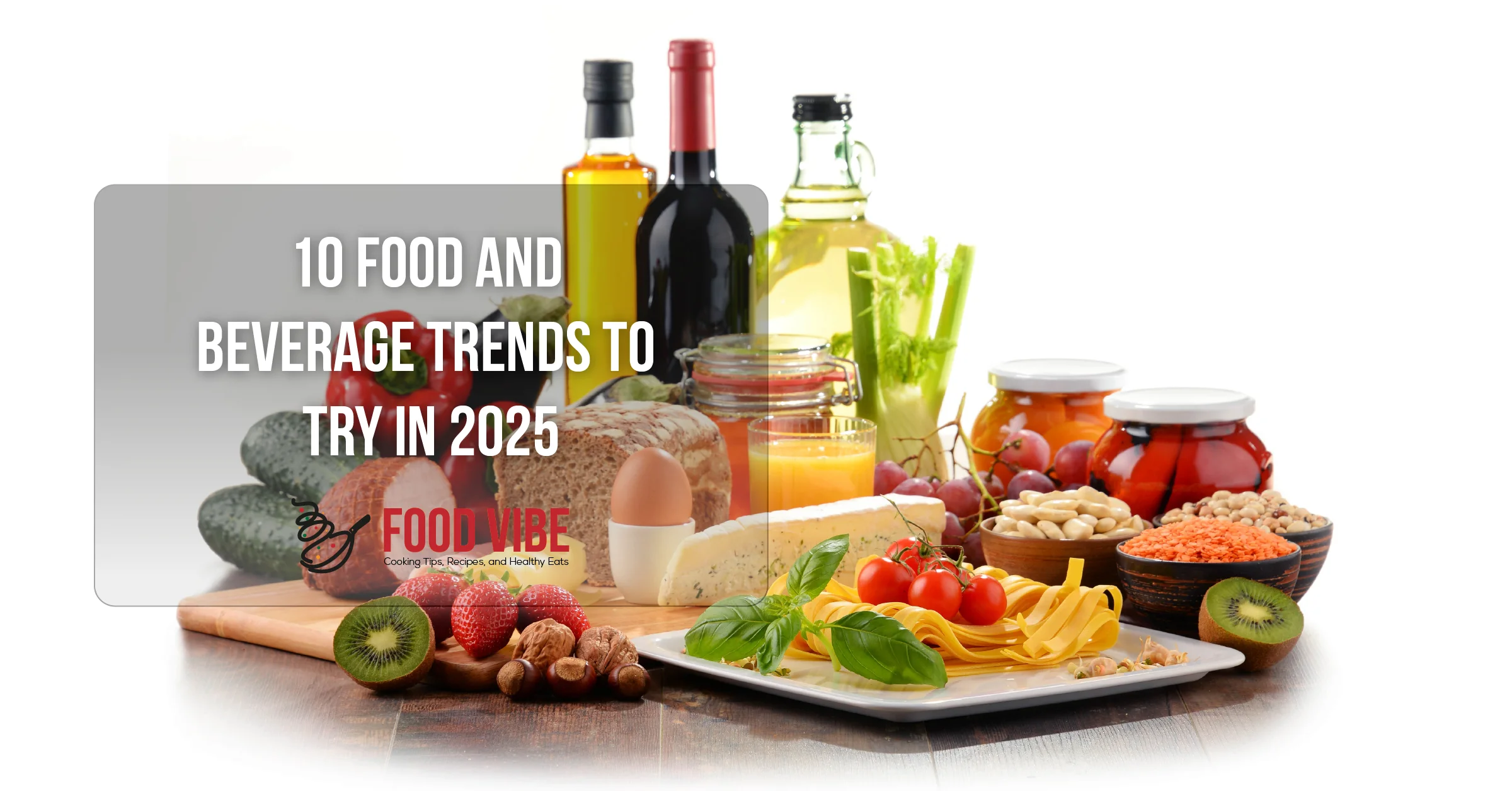How AI is Changing the Food Industry
Have you ever wondered how your favorite meal might be prepared by smart machines? Imagine walking through a farm where sensors check crop health or stepping into a restaurant where an intelligent system helps design a menu that fits your taste. How AI is changing the food industry is not just a futuristic idea—it’s happening right now, and it’s making food production, safety, and service more efficient and innovative.
In simple terms, artificial intelligence (AI) refers to computer systems that can perform tasks that normally require human intelligence. These tasks range from recognizing patterns and analyzing images to making decisions based on a large set of information. In our discussion today, we’ll explore how AI is changing the food industry by improving food production, streamlining supply chains, ensuring safety, and even enhancing dining experiences.
Table of Contents
The Impact of AI on Food Production
Transforming Agriculture
Picture a field where sensors constantly monitor soil moisture and crop health, allowing farmers to water and fertilize their crops only when needed. This is the promise of smart agriculture—an area where AI works hand in hand with modern farming techniques. By collecting information from drones and satellites, farmers can see which parts of their fields need extra care, helping them make smarter decisions.
Key benefits include:
- Precision in Crop Management: Farmers can reduce waste and improve yields by applying resources more efficiently.
- Early Disease Detection: AI can spot signs of disease or pest infestation, allowing for quicker intervention.
Benefits of AI in Agriculture
| Benefit | Description |
|---|---|
| Precision Resource Use | Optimizes water and fertilizer application, reducing waste. |
| Early Problem Identification | Detects pest and disease issues before they spread widely. |
| Enhanced Crop Yields | Helps maximize the output of each acre of farmland. |
| Cost Reduction | Lowers expenses by minimizing resource misuse and crop loss. |
These methods not only save money but also help in producing food in a more environmentally friendly way.

Advancements in Food Processing
In food processing, traditional methods can be slow and sometimes inconsistent. Enter AI-powered machines that help sort, package, and inspect food products. For instance, smart cameras and computer systems now check fruits and vegetables for defects in a matter of seconds, ensuring that only the best produce makes it to your table.
Highlights include:
- Robotic Automation: Machines work tirelessly to sort and package food, reducing the need for manual labor.
- Machine Vision: Systems analyze images to spot quality issues such as bruises or blemishes on produce.
- Consistent Quality: With AI handling repetitive tasks, products maintain a steady level of quality that consumers can trust.
Enhancing Product Innovation
Have you ever tried a new recipe that seemed just right? AI plays a role there too. Chefs and food scientists now use intelligent systems to experiment with new ingredient combinations, optimize recipes, and even create personalized meal plans based on individual dietary preferences.
Some examples include:
- Recipe Experimentation: AI tools examine flavor combinations and suggest unique pairings that might otherwise be overlooked.
- Nutritional Improvements: By analyzing the nutritional content of various ingredients, AI can help create meals that are both delicious and healthy.
- Product Development: Companies are using these insights to develop new food products that cater to emerging consumer tastes.
AI Contributions to Product Innovation
| Application | Impact |
|---|---|
| Recipe Experimentation | Inspires new dishes by suggesting unusual yet appealing ingredient combinations. |
| Nutritional Analysis | Helps create healthier meals by balancing taste with nutritional value. |
| Product Development | Aids in launching new products that align with current consumer preferences. |
This combination of creative input and scientific analysis is giving chefs a fresh perspective on what can be served.
AI in Food Supply Chain and Logistics
Supply Chain Optimization
The journey from farm to fork involves many steps, and AI is streamlining these processes. Smart systems now monitor every step of food distribution, ensuring products reach stores and restaurants on time and in good condition. Imagine a system that tracks shipments in real time, adjusts delivery routes based on current conditions, and suggests the best time to transport goods—all of which help reduce delays and keep food fresh.
Some advantages are:
- Real-Time Monitoring: Sensors and tracking systems provide up-to-date information about shipments.
- Efficient Routing: AI helps plan the most effective delivery routes to minimize delays.
- Inventory Management: By analyzing historical sales and consumption data, AI systems help stores maintain the right stock levels, which reduces waste.
Reducing Food Waste
Did you know that a significant portion of food produced is never eaten? AI is addressing this challenge by forecasting demand more accurately. When stores and restaurants know exactly how much food is needed, they can avoid overproduction and reduce waste. For instance, by analyzing trends in sales and weather conditions, an intelligent system can help decide the right amount of produce to order, ensuring fewer items spoil before they are sold.
Key methods include:
- Demand Forecasting: By studying past trends, AI suggests optimal production levels.
- Waste Tracking: Automated systems monitor food disposal to pinpoint areas for improvement.
- Adjusting Production: Food producers can fine-tune their output based on real-time market conditions.
Enhancing Food Safety and Quality Control with AI
AI-Driven Quality Control
Safety and quality are top concerns in food production. AI systems now use advanced imaging and sensor technologies to inspect food products. For example, computer vision helps detect even small imperfections in packaged food, ensuring that items meet strict quality standards. This technology not only speeds up the inspection process but also reduces human error.
Benefits include:
- Accurate Inspections: Machines check for defects and contamination quickly and reliably.
- Consistent Standards: Automated systems help maintain a high level of quality across large batches of food.
- Real-Time Alerts: Immediate notifications allow for fast corrective actions if a problem is detected.
Forecasting Safety Risks
Food safety is also improved by systems that monitor various factors in real-time. These tools assess conditions such as temperature and humidity to ensure that food is stored under optimal conditions. They also flag potential risks before they become a problem, such as when conditions are likely to lead to spoilage or contamination. This proactive approach helps keep food safe for consumers while reducing the chance of recalls.
Key points to note:
- Continuous Monitoring: Sensors keep track of critical safety parameters in storage and processing areas.
- Early Warnings: Systems provide alerts that help staff take immediate action to prevent issues.
- Improved Compliance: Consistent monitoring helps companies meet regulatory standards for food safety.

AI Applications in Restaurants and Food Services
Operational Efficiency in Restaurants
Restaurants are using AI to make daily operations smoother and more enjoyable for both staff and guests. For instance, smart menu systems help restaurants decide which dishes to promote based on past sales and customer preferences. Automated ordering systems and chatbots assist with reservations and customer inquiries, ensuring a seamless dining experience.
Highlights include:
- Smart Menus: Interactive screens display menu items based on what’s popular at the moment.
- Automated Reservations: AI helps manage bookings and reduce wait times.
- Enhanced Service: Chatbots provide quick responses to customer questions, improving overall satisfaction.
Case Studies and Success Stories
Several well-known brands have already started using AI to improve their operations. Take a look at a few examples:
- A popular pizza chain uses an AI system to adjust menu prices in real-time based on local demand and competitor pricing.
- A renowned burger chain has integrated an intelligent system that manages order flow and staff scheduling, leading to faster service and happier customers.
- Some innovative meal delivery services use AI to recommend new dishes and manage packaging, ensuring food arrives in perfect condition.
These stories show how AI is making a real difference in everyday restaurant operations.
Personalized Customer Experience
The personal touch matters and AI is helping restaurants deliver it. By analyzing customer preferences and past orders, systems can suggest dishes that are likely to please. This customization makes guests feel valued and encourages them to return. Additionally, loyalty programs managed by AI provide personalized offers, ensuring that each customer gets recommendations that match their tastes.
Benefits include:
- Custom Recommendations: Systems suggest dishes based on individual preferences.
- Loyalty Programs: AI-managed programs offer deals that are specific to customer habits.
- Enhanced Interaction: Personalized service helps build stronger connections between customers and restaurants.
Future Trends and Challenges of AI in the Food Industry
Emerging Trends
Looking ahead, the food industry is set to see even more exciting uses for AI. Experts predict that AI will become even more involved in personal nutrition, with systems that can suggest meals based on an individual’s health data. In addition, advanced robotics will further improve food processing and packaging, making these tasks even more efficient. There is also growing interest in sustainability, with AI helping to reduce waste and optimize resource use.
Trends to watch include:
- Personalized Nutrition: Systems that offer meal plans based on health metrics and dietary needs.
- Advanced Robotics: Continued improvements in automated systems for sorting, packaging, and processing food.
- Sustainable Practices: AI applications that help cut waste and improve resource management across the supply chain.
Challenges and Considerations
Despite these promising trends, some challenges need to be addressed. Data privacy is a major concern, as companies must ensure that sensitive information is protected. Integrating new AI systems with older technologies can also be tricky, and there are ethical questions about how much decision-making should be left to machines. Finally, the cost of implementing AI remains a hurdle for many smaller businesses.
Important considerations include:
- Data Privacy: Protecting customer and operational data from breaches.
- System Integration: Making new AI tools work smoothly with existing equipment and software.
- Ethical Concerns: Ensuring fairness in automated decision-making and maintaining transparency.
- Cost Factors: Balancing the benefits of AI with the investment required, especially for smaller companies.
Opportunities for Growth
Even with these challenges, the food industry has many opportunities to benefit from AI. Companies can explore partnerships and pilot projects to test new ideas before committing to full-scale adoption. Collaboration between different sectors—such as agriculture, manufacturing, and retail—can lead to innovative solutions that improve both efficiency and sustainability. By focusing on practical applications, businesses can see real improvements in quality and cost savings.
Key opportunities include:
- Improved Efficiency: Streamlined processes that save time and reduce waste.
- Enhanced Quality: Consistent food safety and quality control measures.
- Customer Satisfaction: More personalized and responsive service in restaurants and retail.
- Sustainable Practices: Better management of resources and reduction of environmental impact.

Conclusion
With the help of AI, farmers are able to produce crops more efficiently, food processors can ensure consistent quality, and restaurants provide personalized dining experiences. Although challenges like data privacy, system integration, and cost remain, the benefits in safety, efficiency, and customer satisfaction are significant. As the food industry continues to embrace these new technologies, the overall impact is set to make food production more sustainable and accessible, benefiting consumers and businesses alike.
Also Read: Trending Thanksgiving Side Dishes to Try in 2025
FAQs
How is AI improving food production?
AI makes farming more precise by using sensors and drones to monitor soil and crop health. This lets farmers water and fertilize only when needed, cutting costs and reducing waste.
What are some ways AI enhances food safety?
AI systems inspect food products using machine vision and sensors, helping to detect defects and contamination quickly. This continuous monitoring ensures that quality and safety standards are met consistently.
How does AI contribute to a more efficient supply chain?
AI monitors shipments in real time and suggests efficient routes. By studying past trends and current conditions, it assists stores and restaurants in maintaining optimal stock levels, thereby cutting waste and reducing delays.
Can AI personalize the dining experience?
Yes! Restaurants use AI to suggest menu items based on previous orders and customer preferences. This personalization helps create a unique dining experience and strengthens customer loyalty.













Post Comment